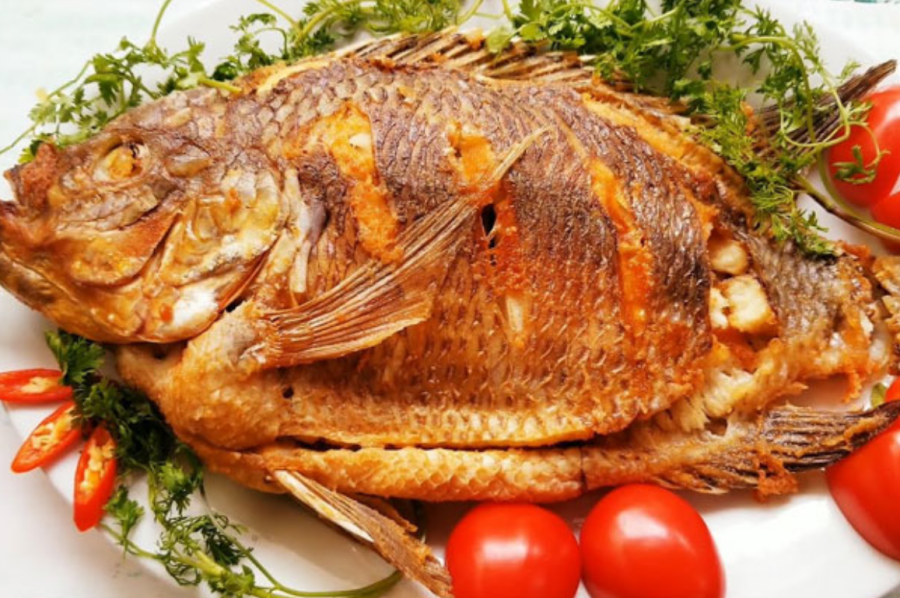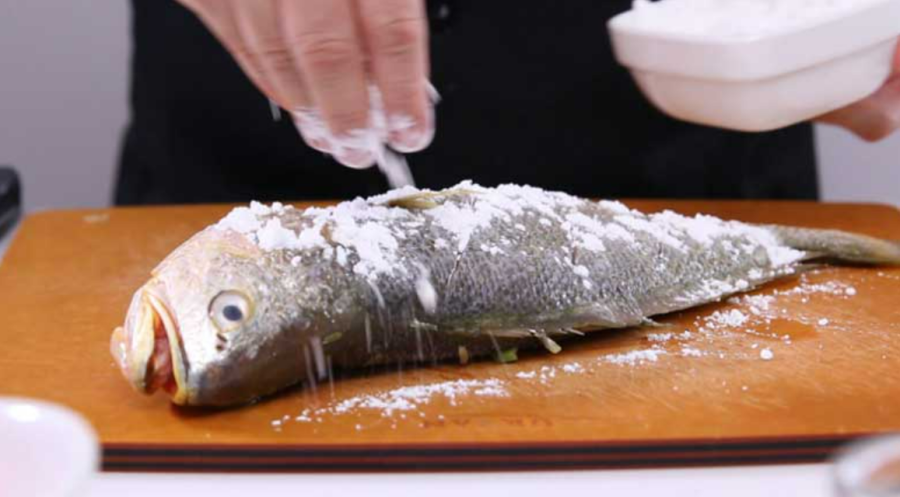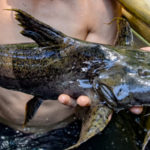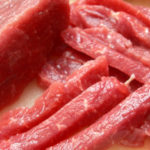Fish has long been known as a nutrient-rich food that provides the body with essential substances including high-protein content, iodine, various vitamins, and minerals.
Consuming fish is beneficial to one’s health, and frequent fish intake contributes to ample gray matter in the brain. This substance plays a crucial role in regulating emotions and memory. Therefore, it is advisable to prioritize fish in your family’s meals.
In culinary preparations, fried fish is a popular choice among many households. However, a common issue encountered by many is the splattering of oil during the frying process, creating inconvenience and posing a dilemma for home cooks. Moreover, fish preparation often results in a fishy smell, broken fish, and a bland taste.
To address these concerns, wise homemakers have revealed a secret that, regardless of the type of fish being fried, it is essential to keep the following three tips in mind.
Use paper towels to pat the fish dry: To achieve crispy, golden-fried fish that does not stick to the pan or splatter grease, it is crucial to thoroughly clean the fish and drain all excess water.
Frying fish immediately after rinsing it can cause water droplets on the fish’s surface to splatter oil and make the fish stick to the pan, which may result in the fish breaking apart and losing its original shape.
Therefore, do not forget to pat the fish dry before frying by using paper towels or a clean cloth to absorb any remaining water.

A simple tip to achieve crispy, unbroken, and oil-free fried fish is to apply a thin layer of flour on the fish’s surface before frying
Create a “non-stick” layer before frying: To prevent fish from sticking to the pan or losing its flesh, an additional step is necessary before adding oil to the pan. Specifically, once the pan is hot, take a few slices of fresh ginger and rub them thoroughly over the entire surface of the pan, using as much ginger as possible.
The ginger will create a temporary non-stick layer on the pan, preventing the fish from sticking during the frying process and imparting a pleasant ginger aroma. After rubbing the ginger, pour oil into the pan, wait for the oil to heat up, and then reduce the heat to low in preparation for frying the fish.
Apply egg white to the fish: Before frying, applying egg white to the fish will result in a delicious dish that does not stick to the pan and has a crispy, golden-brown skin that is both addictive and flavorful.
Additionally, a simple trick to ensure a crispy, unbroken, and oil-free fried fish is to apply a thin layer of flour to the fish’s surface before frying.
However, it is important to apply only a thin layer to avoid altering the dish’s flavor. Aside from wheat flour, you can use readily available all-purpose flour, cornstarch, or potato starch.

You can also sprinkle flour on the fish
Additional notes: To ensure that the underside of the fish is golden and crispy, fry it over medium heat. If the heat is too high, the fish will burn quickly on the outside while remaining uncooked inside.
Only flip the fish once the underside is golden brown. If you flip it too soon, the surface of the fish will not have firmed up yet, causing it to break apart and become unappetizing.
As the fish nears doneness, you can increase the heat to achieve a crispy outer layer. Once the fish is golden brown, remove it from the pan, drain it on paper towels for a few minutes, and arrange it on a plate to serve while it is still hot.
- Thoroughly dry the fish with paper towels to remove excess water and prevent oil splattering.
- Create a non-stick layer by rubbing ginger on the pan’s surface before adding oil, preventing the fish from sticking and adding a pleasant aroma.
- Apply a thin layer of flour and egg white to the fish’s surface for a crispy, golden-brown, and delicious result.
Expert Advice on How to Identify Unsafe Food
Are you aware of how to inspect food for possible safety risks? With the presence of food products from unclear origins and chemicals used as preservatives, it is important to be vigilant in selecting food items for our families. Join us in the Food Tips section to take a closer look at how to select safe and healthy food for our families!






































